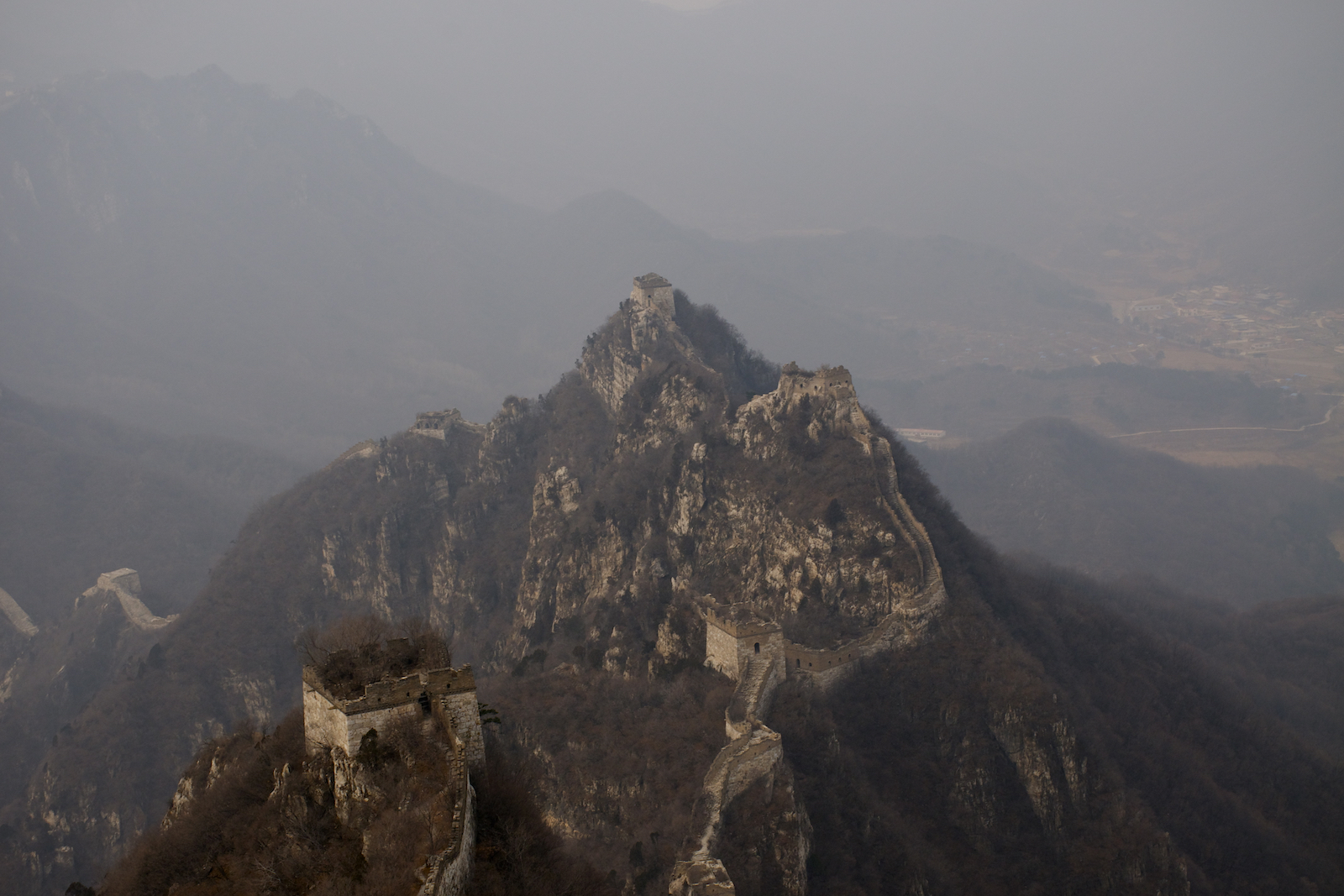
China’s Bad Air: Can the Battle be Won?
Talk about the tyranny of low expectations: Chinese scientists have invented a new type of smart window screen capable of capturing smog, reducing the density of harmful fine particulate matter (PM2.5) within a room to safe limits within a minute. That such an invention is even necessary is telling of the paltry environmental protection guidelines observed in the country, as rapid industrialization is exceedingly coming at the expense of public health.
Indeed, according to MIT researcher Siqi Zheng, there is a measurable negative correlation between reported levels of happiness and official pollution data. Furthermore, on smoggy days, people have been shown to be more at risk of short-term depression and anxiety. Thanks to social media data collected by Zheng’s team, the true social cost of China’s somber skies is coming to the fore.
And for good reason. In real terms, China’s pollution causes 1.1 million premature deaths each year and costs the economy an estimated $38 billion. In many provinces, PM2.5 levels far exceed the global standard. In Shandong, citizens lose as much as five years from their life expectancy due to poor air quality.
That’s why Chinese policymakers embarked on a “war on pollution” in 2013, a pledge that was more formally enshrined during the 19th National Congress in 2017, which announced measures to turn the Middle Kingdom into an “ecological civilization.” Some notable progress has been made since: according to satellite data tapped into by the Energy Policy Institute at the University of Chicago (EPIC), the Air Quality Life Index (AQLI) shows that PM2.5 levels across China were down 23 percent in 2016 compared to 2013 levels – although wind patterns might have played a hand too.
No reason to celebrate
But despite the decrease, China’s PM2.5 index is still almost four times higher on average than the levels deemed safe by the World Health Organization. While tougher environmental regulations pertaining to energy production and emissions of chemical plants have been enacted, one of the main causes for air pollution – industrial overproduction fueled by cheap and dirty coal – has remained virtually untouched. For example, although officials vowed to crack down on aluminum overcapacity and the pollution it produces, economic pressure forced the Environmental Ministry to implement more flexible output reduction plans, exempting aluminum and alumina producers that meet emissions standards
Yet the honest truth is that the enforcement of environmental standards comes at a high price for China’s industry, stifling economic growth and wealth levels in the country’s poorer regions. Economists at Tianfeng Securities say 2017 pollution controls, which ushered in the closure of swathes of Chinese industrial plants in sectors such as steel, cement, and aluminum, may have cost some 40,000 jobs in the greater Beijing-Tianjin-Hebei region alone. While 2018’s targeted cuts were comparably lower, many cities were still obliged to plan the closure of half of their factories when required. Furthermore, millions living in the region lost their coal-fired heating with zero gas replacement and had to endure a freezing winter.
But the enforcement of environmental protection policies has been grossly uneven across China. With growth slowing in the third quarter of 2018, some party officials are actually going back on their environmental commitments. Look no further than Shanxi and Shandong, home of the country’s biggest aluminum producers, and the most polluted regions in the country. Between the two of them, the regions spew into the air around 20% of China’s total CO2 emissions. Instead of taking aggressive steps to ax polluting industries, industrial activity is flourishing: Shanxi is offering preferential access to natural resources for aluminum producers who build new smelters, while Shandong is adding fresh copper smelting capacity.
Environmental inequality
This shows that wealthier regions are able to absorb these structural changes as they are not as industry-dependent and consequently have crossed a threshold whereby economy growth is delinked from industrial activity. In contrast, poorer regions are still far more likely to benefit from sustained economic growth and subsequent wealth increases. Beijing, therefore, faces a real dilemma: it has to balance the need to protect the environment with the need to provide ongoing economic growth to support millions of people working in polluting industries.
It remains to be seen if policy planners will be able to manage the transition successfully. After all, a mixed bag of unhappy and unemployed citizens is hardly ideal at a time when China’s development has reached a decisive moment in its trajectory. It most certainly is not a coincidence that the most powerful state organ, the Reform and Development Commission, is scrambling to reassure citizens by talking about employment security – and why Beijing spends around $180 billion on domestic security every year.
All of this signals that Beijing is still grappling with how to simultaneously protect economic growth and reduce air pollution without alienating poorer regions. Despite clearing skies, increasing inequality between Chinese regions may just be the Achilles heel for the Communist Party. But unless the environment comes first, the planet won’t have much of a future anyway.
